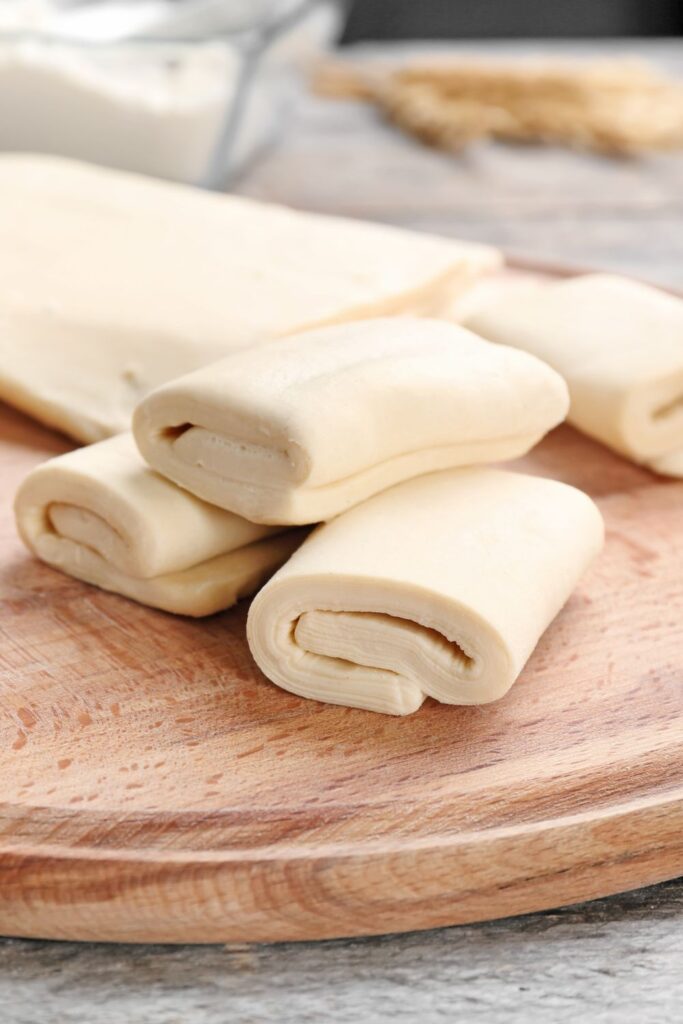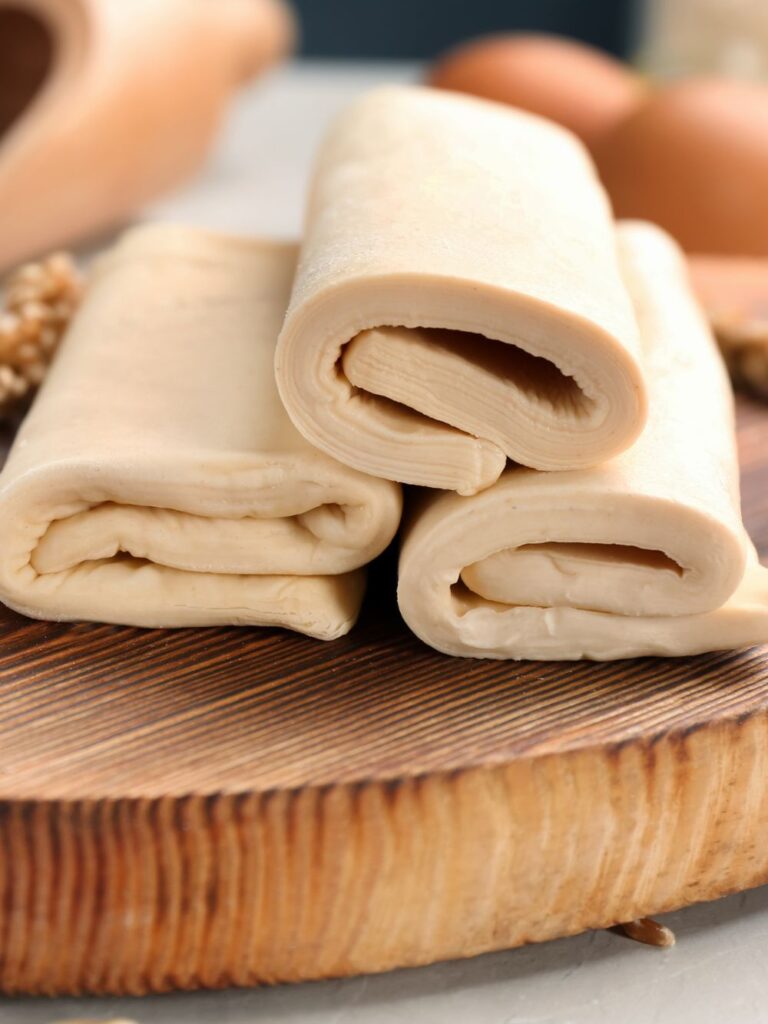If you’re after pastry that feels like you spent all weekend in the kitchen but actually didn’t, James Martin’s Rough Puff Pastry is exactly what you need.
Proper flaky, buttery layers — without the madness of classic puff.
It’s the shortcut pastry every serious home cook should have tucked in their back pocket.
It’s dead useful too. Sausage rolls, tarts, turnovers — this rough puff nails it.
Once you taste it, you’ll wonder why you ever bothered with shop-bought sheets.
Why You’ll Love It
- Flaky layers without endless folding
- Freezer-friendly for future baking
- Works sweet or savoury, no problem
- Uses basic ingredients you already have
- James Martin’s method keeps it honest and doable
Ingredients
- 2.1 oz unsalted butter — grated and frozen
- 7 oz unsalted butter — grated and frozen separately
- 12.3 oz plain flour — chilled
- 8–10 tablespoons ice-cold water (around 142ml)
- 1 teaspoon salt
- ½ teaspoon lemon juice or white vinegar
How to Make James Martin’s Rough Puff Pastry
Get your dry mix sorted:
Bowl. Flour, salt, and the 2.1 oz grated frozen butter. Quick rub with fingertips — should look a bit like rough sand.
Bring it together:
Drizzle the lemon juice and water a tablespoon at a time, stirring lightly with your fingers. You want a firm but not dry dough. Add a touch more water if needed.
Quick knead:
Floured surface. Knead for about a minute just to pull it together.
Wrap it. Chill for 5 minutes.
First roll and fold:
Roll into a long rectangle (6–7 inches wide, 15–16 inches long).
Scatter one-third of the frozen butter over the bottom third.
Fold up like a letter — bottom up, top down.
Turn, roll, fold again:
Turn 90 degrees. Roll out to another long rectangle.
Scatter the second third of butter. Fold again.
One more time:
Roll, scatter the final third of butter, and fold.
Then two more folds without adding butter.
If the dough softens too much, freezer it for 10 minutes. Otherwise keep moving quickly.
Final chill:
Wrap tight. Chill for 2 hours minimum before using.
Or portion, wrap, and freeze if you’re saving it for later.

Common Mistakes and How to Dodge Them
Butter melting too soon?
Keep everything cold. Freeze tools if you need to.
Working the dough too much?
This isn’t bread — fold lightly, don’t knead hard.
Skipping rest times?
No rest = no flaky layers.
Using warm surfaces?
Chill everything if it’s a hot day. Including your rolling pin.
Storage and Reheating
Fridge:
Wrap tight. Keeps fresh up to 1 week.
Freezer:
Wrap in cling film and foil. Good for 6 months. Defrost overnight in fridge.
Frequently Asked Questions
Q: Is rough puff pastry the same as puff pastry?
A: Not quite — rough puff is a shortcut but still gives brilliant flaky layers.
Q: Why use lemon juice?
A: Helps tenderise the dough so it’s easier to roll and fold.
Q: What if my butter melts into the dough?
A: Chill the dough and the butter separately next time. Cold is king.
Q: What makes rough puff rise?
A: Steam trapped between dough layers pushes it up as it bakes.
Nutrition Facts (Per Serving)
- Calories: 229 kcal
- Fat: 16.9g
- Saturated Fat: 10.4g
- Carbs: 16.8g
- Sugar: 0.1g
- Protein: 3g
- Sodium: 106.5mg
Try More James Martin Recipes:

James Martin Rough Puff Pastry Recipe
Description
James Martin’s Rough Puff Pastry delivers buttery, flaky layers with way less effort than traditional puff. Perfect for pies, pastries, and tarts.
Ingredients
Instructions
- Rub flour, salt, and 2.1 oz frozen butter together lightly.
- Gradually add lemon juice and water until a firm dough forms.
- Knead briefly, wrap, chill 5 minutes.
- Roll into a long rectangle. Scatter one-third of frozen butter. Fold like a letter.
- Turn, roll out again, scatter second third of butter. Fold.
- Repeat final butter fold.
- Do two more folds without butter.
- Wrap and chill 2+ hours before using.
Notes
- Keep all ingredients and tools as cold as possible.
- Work swiftly to prevent butter melting.
- If dough gets too soft, chill in freezer for 10 minutes.
- Chill the finished dough fully before rolling out for baking.

